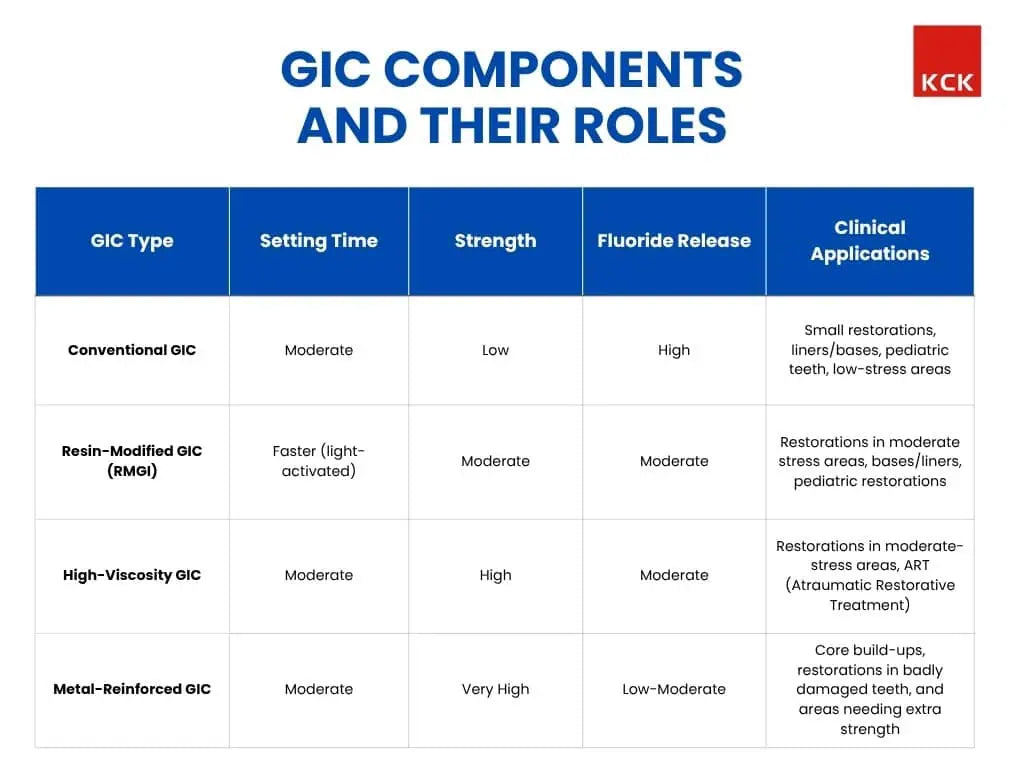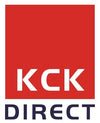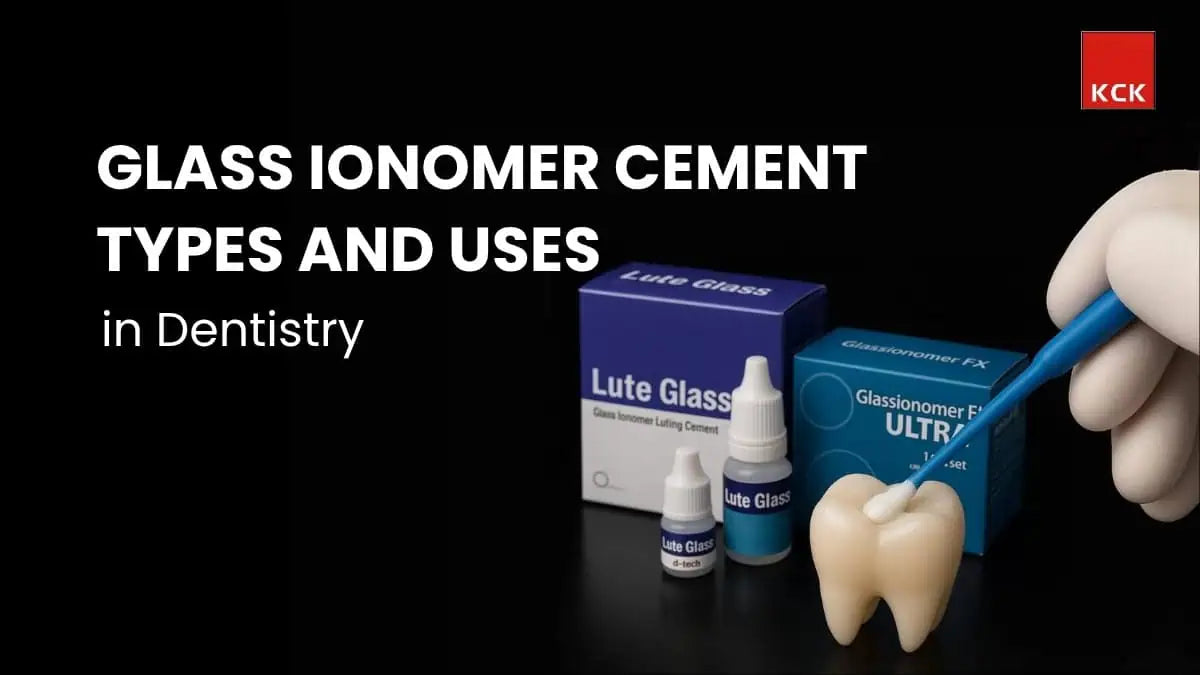What is Glass Ionomer Cement?
Glass ionomer cement (GIC) is a dental material made by mixing silicate glass powder with an organic acid. It sets through a chemical reaction and bonds directly to the tooth.
Its main properties are a natural tooth-like appearance, strong adhesion to tooth structure, fluoride release to prevent cavities, and good biocompatibility.
Unlike composite resins, GICs release fluoride, bond better to moist tooth surfaces, and have a thermal expansion similar to natural teeth, but they are generally weaker in mechanical strength compared to composites.
Why Dental Professionals Need GIC
Dental professionals use glass ionomer cement (GIC) because it sticks well to teeth, releases fluoride to help prevent cavities, is safe for the body, and is easy to handle. It works well for children and patients with a high risk of cavities.
Glass ionomer cement has many other reasons why dentists choose it. Here are a few:
-
Versatility: Dentists use GIC for both restoring teeth and preventing cavities. For example, it can fill small cavities in children or act as a protective sealant on molars.
-
Ease of Use: In Atraumatic Restorative Treatment (ART), dentists can place it quickly without drills. Because GIC needs very little tooth preparation and sticks to the tooth without extra bonding agents.
-
Patient Benefits: GIC slowly releases fluoride, which protects teeth from future decay.
-
Cost-Effectiveness: GIC is more affordable than many resin-based materials So, it is a practical choice in public health clinics and for patients who need low-cost treatment.
Uses of Glass Ionomer Cement (GIC)
Glass Ionomer Cement (GIC) is used in many ways in dentistry. Dentists use it to fill cavities, line or support other fillings, cement crowns and braces, and seal teeth to prevent decay.
As a Restorative Material
-
Carious lesions: Dentists use GIC to fill cavities, especially in children. It is easy to place and bonds chemically to the tooth structure.
-
High-caries-risk patients: Its continuous fluoride release makes it suitable for patients who often get cavities, as it helps prevent future decay.
-
Low-stress areas: GIC works best in areas with less chewing force, such as Class III and Class V lesions.
As a Liner or Base
-
Pulp protection: A GIC liner forms a protective layer between the tooth and materials like amalgam or composite. It reduces pulp irritation and supports healthy dentin formation.
-
Caries prevention: Its fluoride release helps stop secondary caries from forming around the restoration edges.
For Cementation
-
Luting agent: GIC can bond crowns, bridges, and orthodontic appliances like bands and brackets securely to the tooth.
In Pediatric Dentistry
-
Primary teeth restoration: GIC is widely used for restoring baby teeth because it bonds directly, requires fewer steps, and protects against decay through fluoride release.
-
Atraumatic Restorative Technique (ART): In this minimally invasive method, dentists remove decay with hand instruments and use GIC as the filling material.
For Fissure Sealing
-
Temporary sealant: GIC seals the pits and fissures of newly erupted permanent teeth, protecting them from decay.
-
Caries prevention: The sealant not only covers fissures but also releases fluoride, which prevents demineralization and helps remineralize enamel.
Composition of Glass Ionomer Cement (GIC)
Glass ionomer cement (GIC) is a filling material that sticks to teeth on its own. It is made by mixing fluoro-aluminosilicate glass powder with polyacrylic acid liquid. And it is made of a powder called basic fluoro-aluminosilicate glass and a liquid that mainly contains polyacrylic acid mixed with water. It contains:
Powder
The powder is a finely ground, acid-soluble fluoro-aluminosilicate glass.
|
Essential ingredients: Silica (SiO2SiO_2SiO2), alumina (Al2O3Al_2O_3Al2O3), and calcium fluoride (CaF2CaF_2CaF2). |
Added components for enhancement:
Strontium or zinc oxide: It makes the cement visible on X-rays (radiopacity).
Aluminum phosphate: Acts as a buffering agent.Cryolite (sodium aluminum fluoride): Lowers the fusion temperature during manufacturing.
Liquid
The liquid in glass ionomer cement is an aqueous solution of polycarboxylic acids, which start the acid-base reaction with the glass powder. Polyacrylic acid is the main ingredient that reacts directly with the glass.
Copolymerizing acids such as maleic, itaconic, or tricarboxylic acids boosts reactivity, reduces thickness, and prevents the mixture from gelling too quickly. Tartaric acid helps extend the working time while creating a faster, more defined “snap set.” Water serves as the medium for the reaction and hydrates the resulting gel matrix.
Modified GICs
Resin-modified GIC (RMGIC) combines traditional glass ionomer cement with resin. It hardens through both an acid-base reaction and light-activated polymerization. It helps in improved strength, wear resistance, and appearance, though its biocompatibility is slightly lower.
Metal-reinforced GIC contains added metal particles, such as silver-amalgam alloy, to increase its mechanical strength. However, this reduces fluoride release and makes the cement more opaque.
Clinical Relevance of GIC Composition
-
Chemical adhesion: Polyacrylic acid in GIC bonds directly to the calcium in enamel and dentin, forming a strong and durable seal that prevents microleakage and secondary cavities.
-
Fluoride release: The fluoro-aluminosilicate glass serves as a long-term fluoride source, helping to remineralize teeth and protect patients at high risk of cavities.
-
Biocompatibility: Large polymeric acid molecules limit penetration into dentinal tubules, producing a mild, non-irritating response in the pulp. This makes GIC ideal for use as liners or bases in deep cavities.
-
Thermal compatibility: GIC expands and contracts similarly to natural teeth, reducing the risk of gaps at the margins and sensitivity to temperature changes.
-
Moisture tolerance: Being hydrophilic, GIC performs well in moist environments, making it especially useful in pediatric dentistry and atraumatic restorative treatment (ART).
GIC Components and Their Roles

Types of Glass Ionomer Cement (GIC)
-
Conventional GIC
The original glass ionomer cement (GIC) is created through a chemical reaction between silicate glass powder and polyacrylic acid. It is set by an acid-base reaction, releases fluoride over time, and forms a strong bond with the tooth structure. However, it is brittle and has low resistance to wear and fracture, making it unsuitable for areas of the mouth that experience high stress.
-
Resin-Modified GIC (RMGI)
Resin-modified glass ionomer cement (RMGIC) is an enhanced version of conventional GIC that includes a hydrophilic resin. The added resin strengthens the material, increasing its flexural and tensile strength while lowering its elastic modulus, which makes it more resistant to fractures. Compared to traditional GIC, RMGIC provides better wear resistance, though it may still face limitations in areas subjected to very high stress.
-
High-Viscosity GIC
High-viscosity glass ionomer cement is a type of GIC, either conventional or resin-modified, formulated with a higher powder-to-liquid ratio, which makes it thicker. This increased viscosity enhances its compressive strength and improves wear resistance. Dentists use high-viscosity GIC for restorative treatments in areas of the mouth that experience moderate chewing stress.
-
Metal-Reinforced GIC
Metal-reinforced glass ionomer cement is a type of GIC that incorporates metal particles, such as silver or gold, into the glass powder. The added metal significantly enhances the cement’s mechanical strength and resistance to fracture. Dentists use metal-reinforced GIC for core build-ups and to restore severely damaged teeth that require additional strength.
Glass Ionomer Cement Uses
-
Restorations for cervical lesions-GIC fills cavities near the gum line. It provides a strong seal and prevents further decay.
-
Lining under composite fillings-Acts as a protective barrier between the tooth pulp and the main restoration. So, less sensitivity and supports long-term tooth health.
-
Cementing crowns and bridges-Bonds indirect restorations securely to teeth, ensuring stability and durability.
-
Orthodontic bracket bonding-Attaches braces brackets firmly to teeth while releasing fluoride to reduce white-spot lesions.
-
Fissure sealants-Seals pits and grooves on chewing surfaces to prevent decay, especially in newly erupted teeth.
-
Temporary fillings- Provide short-term protection for cavities while waiting for permanent treatment.
-
Restoring primary (baby) teeth with GIC is ideal for children’s teeth because it is easy to place, bonds well, and releases fluoride to protect against future decay.
-
Core build-ups-Strengthens and rebuilds damaged teeth before placing crowns, ensuring a solid foundation.
-
Atraumatic Restorative Treatment (ART)-Used in minimally invasive procedures to restore decayed teeth without drilling, making treatment simpler and less stressful for patients.
-
Liners or bases under amalgam or composite-Protects the pulp from irritation and helps prevent secondary decay at the restoration margins.
-
Repairing small fractures or chipped teeth-Restores minor damage with a tooth-colored material that blends naturally and protects the tooth.
-
Management of high-caries-risk patients-GIC releases fluoride over time.It helps to prevent new cavities in patients prone to decay.
Advantages and Disadvantages of GIC in Dentistry
Advantages |
Disadvantages |
|
Fluoride release-Protects teeth from cavities and helps remineralize enamel over time. |
Lower mechanical strength-Not ideal for areas that experience heavy chewing forces. |
|
Chemical bonding to tooth-Bonds directly to enamel and dentin without extra adhesive. |
Brittleness-Can fracture under pressure. |
|
Biocompatible-Gentle on the pulp, safe for use in deep cavities. |
Wear resistance-Weary down faster than composite resins. |
|
Moisture tolerance-Can be placed in slightly wet conditions; it is easier to handle. |
Aesthetic limitations-Less translucent and natural-looking than some resin materials. |
|
Versatile-Suitable for restorations, liners, bases, sealants, and orthodontic applications. |
Setting Conventional- GICs may take longer to set fully. |
High-Quality GIC Products for Every Need
The performance of Glass Ionomer Cement depends on its composition, type, and intended use. Choosing a high-quality GIC ensures that it releases fluoride continuously, bonds strongly to tooth structure, and delivers consistent, reliable results in every procedure.
For dentists who want trustworthy, effective, and safe materials for restorations, sealants, and other applications, KCK Direct provides high-quality GIC that you can rely on to achieve excellent outcomes in your dental practice.
We offer not only glass ionomer but also other high-quality dental equipment for your dental practice or clinic. Browse our website to explore offers for bulk purchases.
FAQ’s
Which GIC cement types are most durable?
Resin-modified GICs and metal-reinforced GICs are the most durable. They resist wear and fractures better than conventional GICs.
What are the main glass ionomer cement uses in pediatric dentistry?
Dentists use GIC in children for filling cavities, sealing pits and fissures, and cementing crowns. It works well because it releases fluoride and bonds directly to teeth.
Can GIC be used for permanent fillings?
Yes, GIC can be used for permanent fillings, especially in areas that do not face heavy chewing pressure. It protects teeth and lasts for several years.
Does GIC release fluoride over time?
Yes, GIC slowly releases fluoride. This helps protect teeth from decay and strengthens enamel over time.
What is the setting reaction of glass ionomer cement?
GIC sets through an acid-base reaction. The liquid acid reacts with the glass powder, forming a strong, hard material that bonds to the tooth.
Why is moisture control important during GIC placement?
Moisture can weaken the cement. Dentists keep the tooth dry so the GIC sets properly and sticks strongly.
Is the GIC cement composition the same for all brands?
No, different brands may have slightly different powders, liquids, or additives. These changes affect strength, setting time, and appearance.
How does GIC cement bond to teeth without etching?
GIC bonds chemically to calcium in the tooth structure. This direct bonding works without the need for acid etching.


